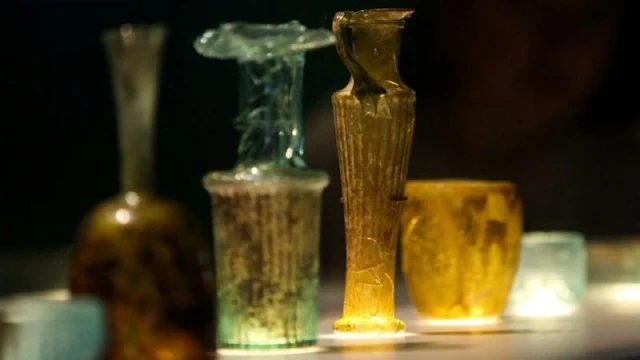The Art of Heists, How Stolen Treasures Disappear from the UK's Grand Museums
 |
| Unraveling the Intricate Web of Museum Heists and their Startling Consequences |
In a daring act that has captured the world's attention, a renowned UK museum fell victim to a brazen theft, leaving authorities and art enthusiasts baffled. The audacity of such a crime has brought the intricate security measures of the world's grand museums under scrutiny. The question remains: how do these treasured artifacts vanish from the watchful eyes of vigilant security systems?
Recent reports have spotlighted the United Kingdom's prestigious museum, as a significant collection piece vanished without a trace. The incident prompted authorities to take immediate action, leading to an employee dismissal and a Metropolitan Police investigation.
The stolen items, primarily kept for research purposes and seldom displayed to the public, often take a mysterious journey after being pilfered. They can end up on the black market, undergo melting and recasting, or even change hands at prices far below their real value. The frequency of museum thefts, despite advanced security systems, underscores the sophistication of the criminals involved.
Art Recovery Expert's Perspective
In an exclusive interview with BBC, Christopher Mariner, founder of "Art Recovery International," revealed that museum thefts occur more frequently than one might expect. His organization specializes in tracking down stolen artworks globally, but even Mariner found the audacity of this particular museum theft astonishing.
He highlighted that while thefts happen worldwide on a daily basis, the scale of this incident, involving a renowned institution, was indeed shocking.
Museum Safeguarding Measures
When envisioning museum theft, the image of a thief extracting treasures from glass cases might come to mind. However, the reality is more complex. Many artifacts are securely stored behind closed doors. For instance, at the "Natural History Museum," housing a staggering 80 million items, only a minute fraction is publicly displayed. Similar scenarios apply to other renowned institutions like the "British Museum."
Experts emphasize that museums focus their security efforts on protecting items displayed to the public rather than those stored away. To gain certification from the Arts Council, museums must adhere to specific security standards for all aspects of their operations, including staff, visitors, and the preservation of cultural heritage.
A Network of Protection
The "Global Museum Security Network," managed by Alice Parren-Bradley, coordinates the sharing of security-related information among its 1500 members. Delicate items often find their way to secure storage areas, while some remain accessible for scholarly research purposes.
The Importance of Vigilance
Parren-Bradley warned that without comprehensive inventory lists, security measures could be rendered ineffective. Museum thefts might go unnoticed for months or even years, with insiders altering records and hiding their tracks.
Theft Dynamics and the Black Market
Theft motives often vary, from personal gains to exploiting an opportunity within the institution. However, once stolen, time becomes of the essence. Valuable items may be sold quickly at undervalued prices, making timely resale crucial. Insider information, shared among a network of buyers, ensures a swift sale on the underground market.
Protecting Precious Legacies
The battle against art heists is intricate and ongoing. As museums strive to safeguard their treasures, criminals are devising ever-more sophisticated tactics. The theft of historical and cultural artifacts is a battle fought on multiple fronts—combining technology, vigilance, and collaboration among international authorities. The fate of these stolen treasures hangs in the balance, as the world watches closely to see if they'll ever resurface or remain lost to time.



Comments
Post a Comment